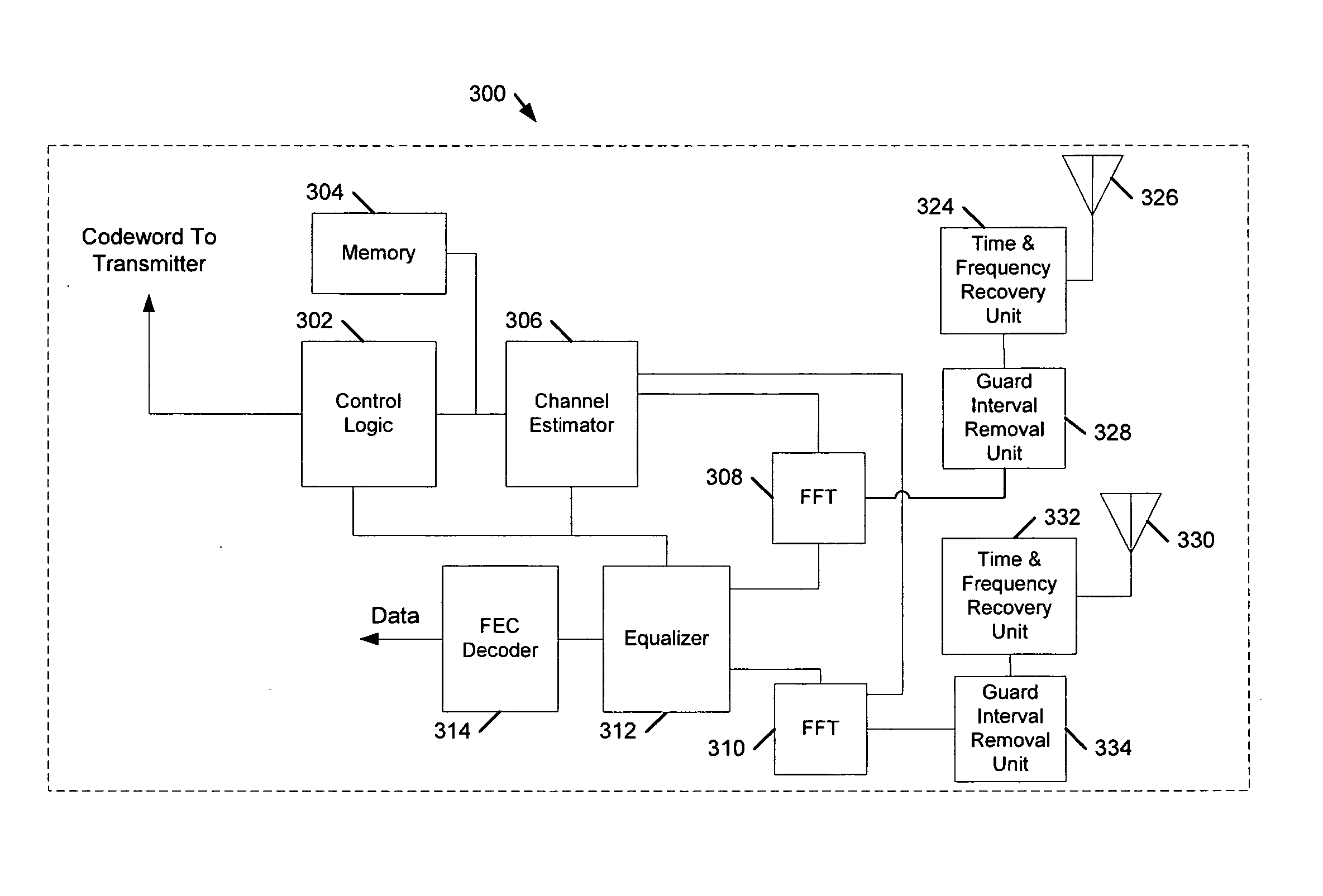Reduced search space technique for codeword selection
a search space and codeword technology, applied in the field of reduced search space technique for codeword selection, can solve the problems of increasing the complexity or resource consumption of transceivers, increasing the complexity of beamforming systems, and computationally intensive, and adding an element of delay in returning an indication
- Summary
- Abstract
- Description
- Claims
- Application Information
AI Technical Summary
Problems solved by technology
Method used
Image
Examples
process 400
[0089]Process 400 of FIG. 4a and operation 404 of FIG. 4c, as they apply to CB(3, 2, 3), CB(4, 3, 3), and CB(4, 3, 6) can be compactly represented by the following statements and equations.[0090]1. Find the index of the vector codeword from CB(Nt, 1, L) that is most correlated with the weakest eigenmode of V (i.e. Vw).
ind=argmaxi=1,…,2L(CB(Nt,1,L)iHVw)Eq.8[0091]2. Select the matrix codeword with the same index in the codebook.
{circumflex over (V)}=CB(Nt,S,L)ind Eq. 9
[0092]The selected matrix codeword minimizes the chordal distance to Vs.
[0093]FIG. 5a illustrates a process for identifying a precoding matrix codeword according to an embodiment of the invention. Process 500 is performed when a codeword in any one of the following codebooks needs to be identified and its index sent to a transmitter: CB(3, 2, 6), and CB(4, 2, 6). Process 500 is also used in other situations as described in greater detail elsewhere herein. The codeword identification process performed for identifying a ...
PUM
 Login to View More
Login to View More Abstract
Description
Claims
Application Information
 Login to View More
Login to View More - R&D
- Intellectual Property
- Life Sciences
- Materials
- Tech Scout
- Unparalleled Data Quality
- Higher Quality Content
- 60% Fewer Hallucinations
Browse by: Latest US Patents, China's latest patents, Technical Efficacy Thesaurus, Application Domain, Technology Topic, Popular Technical Reports.
© 2025 PatSnap. All rights reserved.Legal|Privacy policy|Modern Slavery Act Transparency Statement|Sitemap|About US| Contact US: help@patsnap.com



